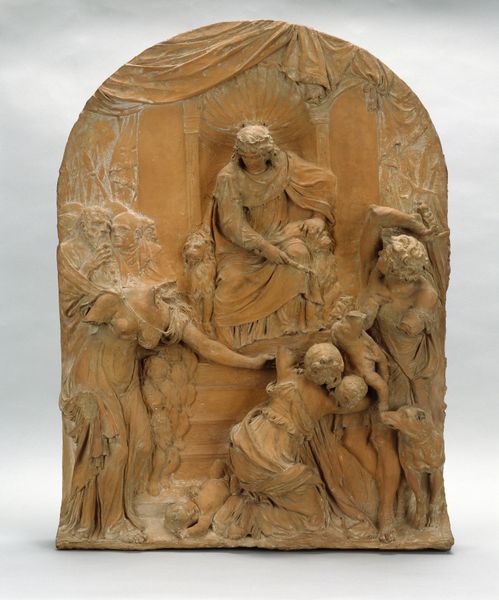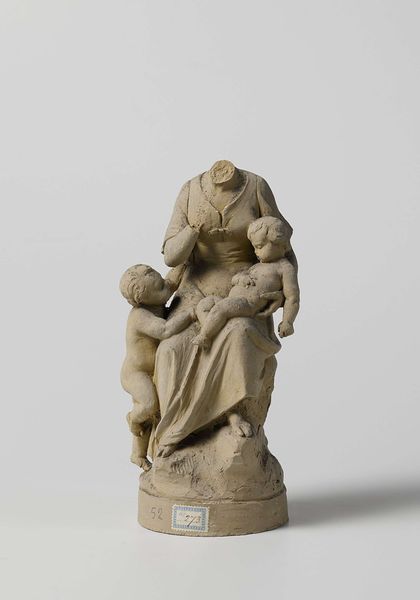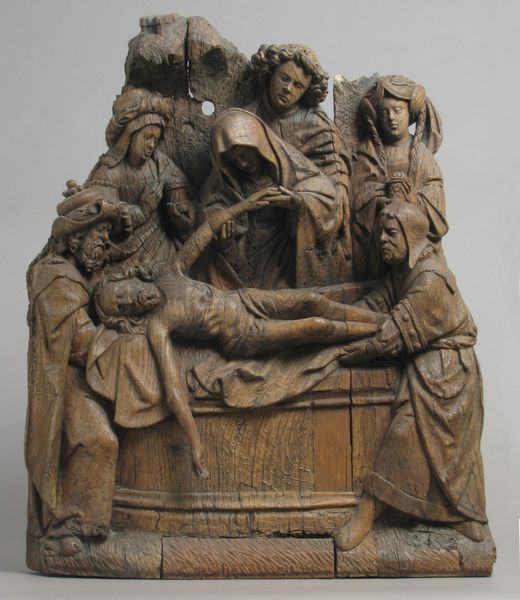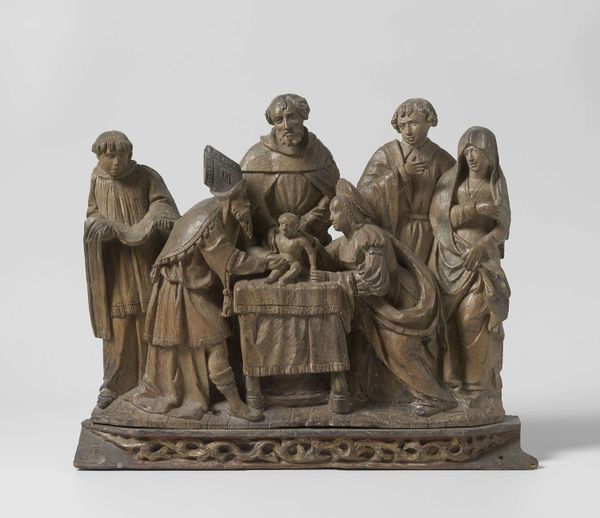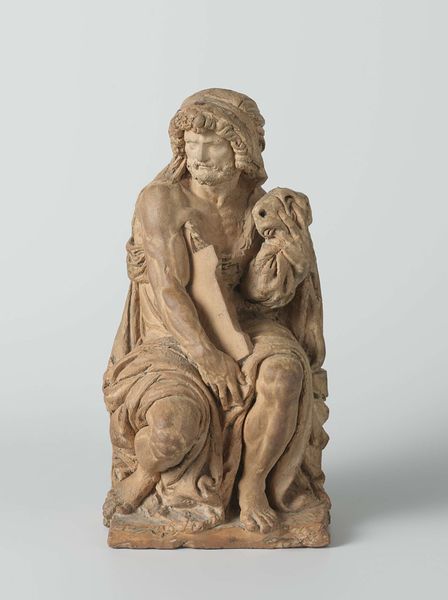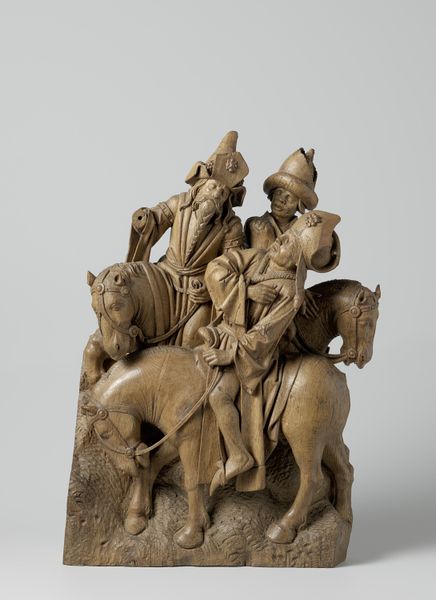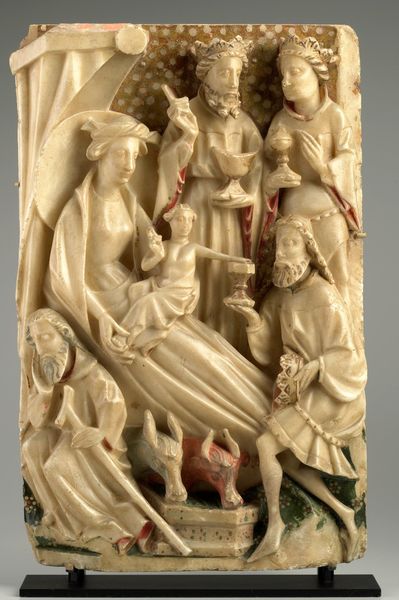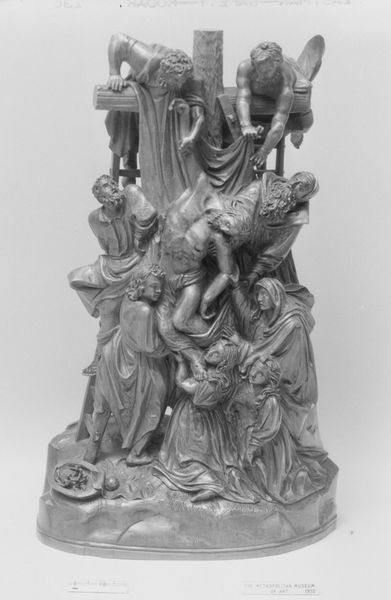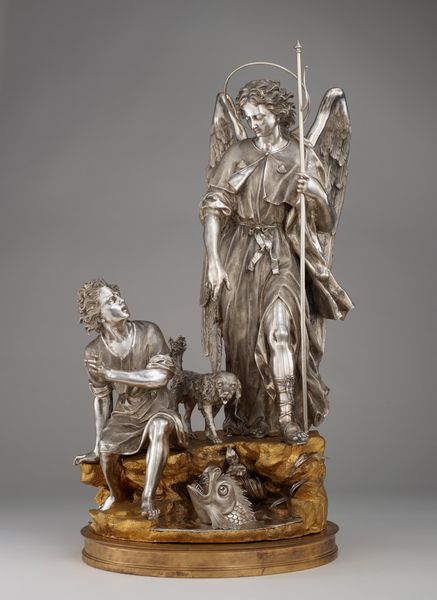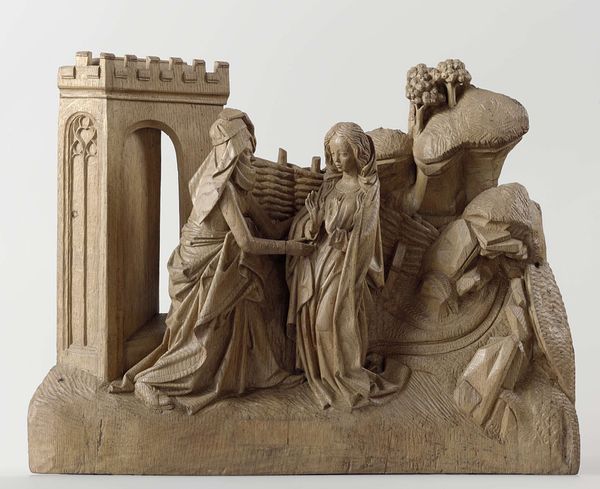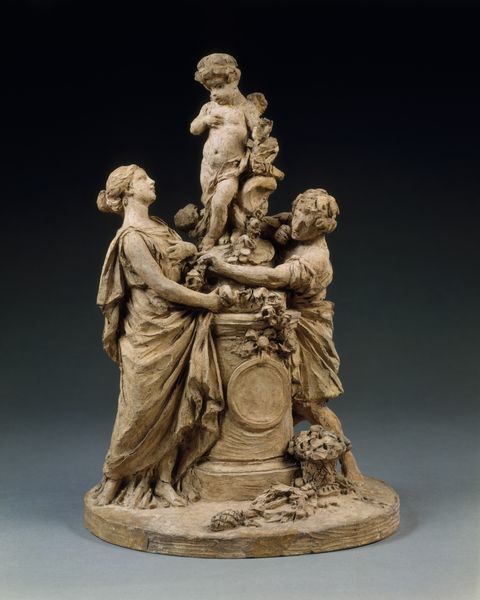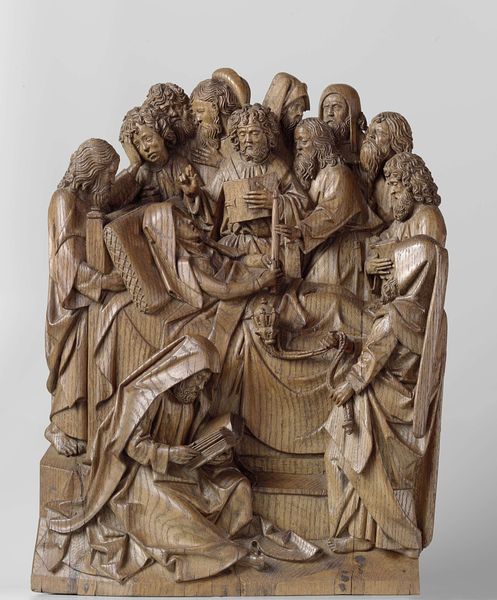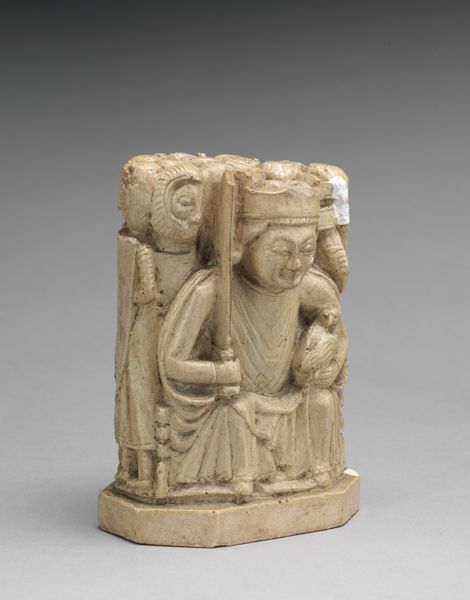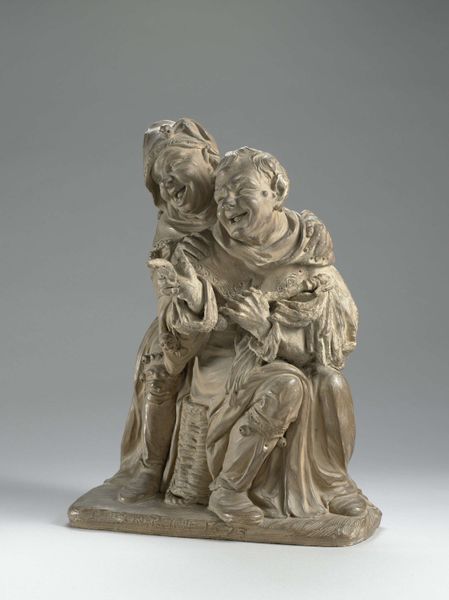
sculpture, wood
#
medieval
#
stone
#
sculpture
#
figuration
#
sculpture
#
wood
#
northern-renaissance
#
statue
Dimensions: height 45.3 cm, width 37.5 cm, depth 23.5 cm
Copyright: Rijks Museum: Open Domain
Curator: Here we have "Mary, Joseph and three angels", carved in wood around 1475-1477 by Adriaen van Wesel. The piece is part of the Rijksmuseum's collection. Editor: Wow, it's got this beautiful raw quality to it. You can really feel the texture of the wood; and I’m totally drawn to Joseph’s expression. He looks, I don't know...pensive? Curator: Yes, there’s a directness to the carving, even a rawness, that moves away from strictly idealized representations. This was produced at a time when workshops relied on commissions. We might consider how van Wesel's own workshop operated—the division of labor, the materials sourced. Did he do all of this work, or did he have assistants? Editor: Makes me think about all those anonymous hands potentially involved, all those skilled craftspeople whose names history didn't quite catch. And there he is, old Joseph, maybe just contemplating the state of artistic production, who knows? Ha! I wonder what kind of wood was used. I bet its grain felt amazing before it was even carved. Curator: We think it's likely oak. The choice of material impacts the carving process. Oak, known for its density and durability, dictates a certain approach and set of tools. The work, I believe, originally formed a section of a larger altarpiece, where color would’ve played a key role. Editor: That explains the relatively flat background! So, it was likely much more vibrant back in the day! It does feel very...sturdy though. Like something built to last, in its own medium, in its time. The detail in the instruments is really something. Curator: Yes! And what strikes me are the individual features of each angel: each has their own distinct expression, and plays a recognizable contemporary musical instrument. That balance between realistic and symbolic must have really impacted its contemporary viewers. Editor: It really personalizes this familiar biblical scene. To come upon this work—originally as part of a larger display—during prayer... it’s sort of like having a private audience with a moment from a timeless story. This one piece has really got me thinking. Curator: For me, it raises interesting questions about the networks of making and the economies surrounding it; things often absent in more traditional art historical narratives. Editor: Exactly, material considerations meet ethereal contemplation—makes you look and think again.
Comments
No comments
Be the first to comment and join the conversation on the ultimate creative platform.
